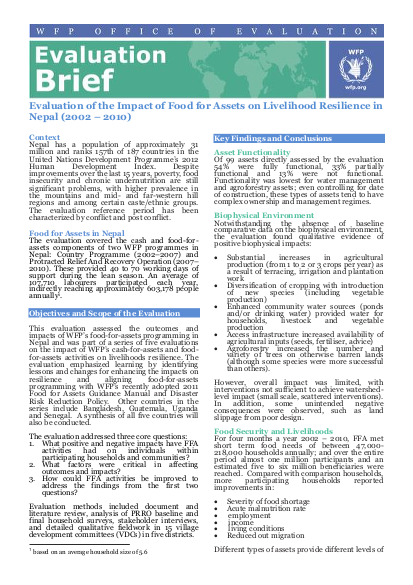
This evaluation was one in a series that assessed the outcomes and impacts of WFP's food-for-assets programming on livelihoods resilience. The evaluation emphasized learning by identifying lessons for enhancing the impacts on resilience and aligning food-for-assets programming with WFP's recently adopted 2011 Food for Assets Guidance Manual and Disaster Risk Reduction Policy. The evaluation covered the food/cash for assets component of WFP Nepal Country Programme (2002 - 2007) and the Protracted Relief and Recovery Programme (2007 - 2010). Approximately 107,710 laborers annually received 40 - 70 days of rations in the lean season. The evaluation used a mixed method approach that included reanalysis of an existing household survey, plus new data from asset assessments, focus groups, and interviews.
The evaluation found that WFP Nepal made an important contribution to immediate food security of several million food insecure people. This was especially important during the extended conflict and post conflict period, compounded by drought, food price inflation and other forces. Public assets made a significant contribution to economic and social capital during and after conflict, although benefits were not always equitably distributed. In Nepal's context of severe caste, ethnic, gender and geographic inequality, care should be taken to design assets and associated processes to meet the needs of the poorest. To achieve long term sustained impact, WFP should develop longer term projects that include all the necessary associated elements of partnership, participatory planning, social mobilization, maintenance arrangements, and adequate technical planning and support for asset design and construction. The evaluation made seven reommendations related to these issues.
